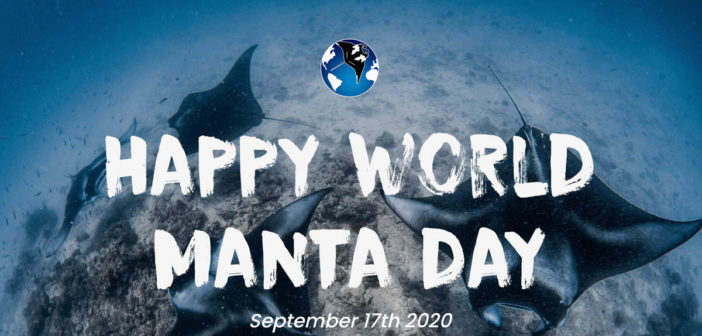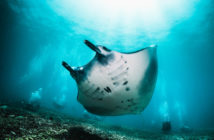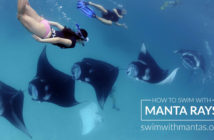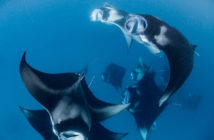On September 17th 2020 the world will finally have a dedicated day to celebrate these beautiful, enigmatic and vulnerable species. Let’s get mantas trending! #WorldMantaDay
Manta rays are giants of the ocean, reaching up to seven meters in width, weighing up to two tons and boasting the biggest brain of any fish. Their placid temperament and fluid, graceful movements make them the must-see species that thousands of divers and snorkelers seek out annually. This year heralds the first World Manta Day, a chance to celebrate these incredible animals, inform and educate people about the threats they face, and instil a desire to protect them.
Manta rays, and their smaller cousins the devil rays, are collectively known as mobulids and are closely related to all other sharks and rays. Being filter feeders, they swim through the ocean sifting their tiny plankton prey out of the water column using their ‘devil horn’ cephalic fins as a funnel. There are currently two species of manta ray and eight species of devil ray distributed across the warm tropical and subtropical waters of the world.
Sadly, all manta and devil ray species are under increasing threat. They reproduce infrequently, having just a single pup at a time, which makes them incredibly vulnerable to over-exploitation. Their largest threat is overfishing. Fisheries target mobulids for the gills they use to respire and feed, cutting them from the animal and drying them out in a cruel and wasteful practice similar to shark finning. These gills are then exported, often to regions of South East Asia and China, where they are consumed as a pseudo-remedy. In regions where manta rays are not directly targeted for their gills, their existence is still under threat. Needing to continuously swim to respire and without the ability to swim backwards, mobulid rays can easily get entangled and suffocate in fishing lines, nets and even boat mooring ropes! Thankfully, the economic incentive of eco-tourism has started to turn the tide for these enigmatic animals. Worth far more alive than dead, manta rays draw millions of tourists to dive hotspots like Mexico, Indonesia, Mozambique and the Maldives and drive the economy in these locales.
Numerous conservation research groups are studying populations of manta ray on the coral reef and around the world. This research is driven by the many unanswered questions about these enigmatic and fascinating creatures. How long do they live; where do they give birth; what are the population sizes like; where are mobulid rays distributed on the high seas, and exactly how many are being caught each year in international waters? These are all questions that remain a mystery and for which scientists strive to find the answers.
Over 30 organisations working to protect manta and devil rays are taking part in the first ever World Manta Day! If you love manta rays, sharks or any of the myriad of marine megafauna in our oceans, please join with us to protect these gentle giants and their ocean habitats. Let’s celebrate World
Manta Day on 17 September 2020!









